- Home
- Tom Clancy
Armored Cav: A Guided Tour of an Armored Cavalry Regiment Page 6
Armored Cav: A Guided Tour of an Armored Cavalry Regiment Read online
Page 6
During development and testing, the M 1 suffered a great deal of public criticism. Despite all that, the new tank quickly began to acquire a reputation of awesome proportions. In 1982, during REFORGER-82, the annual NATO exercise to test rapid allied reinforcement of forces in Europe, a brigade of M1s went head-to-head with a Canadian brigade of Leopard I tanks simulating an invader. Making use of their superior mobility (up to 45 mph/70 kph), the American unit quickly found gaps in the Canadian lines and rapidly exploited them. So impressed were the Canadians with the M1s, during the after-action review, they dubbed them “Whispering Death.” Compared to the diesel engines of their Leopards, the M1s’ turbines were virtually shadow quiet. As an added benefit, the turbine was proving easier to maintain than conventional diesels. In fact, it takes a team of mechanics less than an hour to change out the entire AGT-1500/transmission power pack, compared to over four hours to change the diesel on the old M60A3 Patton.
During the years that followed, more and more American units were equipped with the M1. With increasing field experience and constant advances in manufacturing technology, improvements were gradually introduced. The first, simply known as the IP M 1 (for improvement program), included armor-protection enhancement, minor modifications to the gun system, and an increase in stowage space. In 1988 the really new model the Army had been waiting for arrived—the M1A1. Since the M1’s inception, there had been plans to mount a U.S. version of the German Rheinmetall 120mm smoothbore cannon (known as the M256). In 1984, some fourteen M1s (known as M1E1s) were fitted with the 120mm gun for evaluation and testing. With the success of these trials, the Army authorized production of the M1A1. Though the turret had to be redesigned somewhat to accommodate the new gun (the American version is produced by the Rock Island Arsenal in Illinois), the results were stunning. With new German-designed, NATO-standard 120mm ammunition, this was the tank the Army took to the Persian Gulf, and victory over Iraq.
In addition to the more powerful gun, the M1A1 had other major improvements. For the first time, a U.S. tank was equipped with an atmospheric overpressure system to allow the crew to survive and fight on a battlefield contaminated with toxic chemicals or biological weapons or nuclear fallout. A fan draws outside air through a series of filters, similar to those in a gas mask, but much bigger, and keeps the interior of the crew compartment at a slightly higher pressure than normal: Clean air can leak out, but no contaminated air can leak in.
And then there was the armor. While the Chobham armor of the earlier M1s was adequate, the Army was getting concerned about just how well it would hold up against the new long-rod penetrators being deployed on Soviet-designed tanks. So TACOM told General Dynamics to add an additional layer of armor to the M1A turret. The exact details remain classified, but the new package probably consists of a stainless-steel shell surrounding a layer (probably an inch or two thick) of depleted uranium, woven into a wire-mesh blanket. Combat experience has shown this to be almost invulnerable to anything short of an AGM-65 Maverick or AGM-114 Hellfire missile. Two variants of the M1A1 have this modification, the M1A1 HA (Heavy Armor) and the M1AI HC (Heavy Armor-Common). The M1A1 HC also has a digital engine-control system, which improves fuel economy during idle and road-march periods.
The M 1 A2 is externally distinguished by the Commander’s Independent Thermal Viewer (CITV), the stubby cylinder that sticks up on the right side of the turret roof. The device just above the gun muzzle is the muzzle-reference sensor, which uses a laser beam to measure the “droop” of the gun barrel caused by barrel heating and temperature changes. Note that the driver’s hatch is open-it is raised slightly by pressing a lever and then pivoted to the left.
GENERAL DYNAMICS LAND SYSTEMS
The performance of the M1A1 during the Gulf War demonstrated the validity of the original concepts of General Abrams and the M1 design team. And while the M 1 did burn up a lot of fuel, this problem was overcome by meticulous logistic planning and the efforts of the truck drivers and helicopter crews responsible for resupplying the fleet. On the plus side, the M1A1 was almost invulnerable to Iraqi fire, with only a few disabled by anti-tank mines (damage usually repairable in the field by replacing broken track sections and road wheels). Not one M1A1 was put out of action by enemy direct fire, and only one M 1 crewman was killed, a tank commander standing in his hatch when ammunition and fuel exploded inside an enemy vehicle he had just knocked out. For the record, M1A1s killed more enemy tanks than any other weapons system of the war. “When I went into Kuwait I had thirty-nine tanks,” one captured Iraqi battalion commander said. “After six weeks of air bombardment, I had thirty-two left. After twenty minutes in action against the M1s, I had none.”
The M1A2—A Guided Tour
Even before Desert Storm showed off the capabilities of the M1A1 in combat, TACOM and General Dynamics had decided to see just how far they could push the basic M1 design. Originally called M1 Block II, the M1A2 was designed to try out a number of high-technology features, such as a main gun autoloader (thereby cutting crew size to three), a second thermal sight for the tank commander, and an all-digital vehicle control system. There also was an idea for an inter-vehicular data link, to let a unit commander control his unit without using voice radio, simply by sending graphic instructions and text messages. (In the excitement and terror of combat, voice radio commands can become unintelligible, even in the most disciplined unit, because too many men are shouting at the same time over the same channel.) Development of the M1A2 began in late 1989; and by 1992, prototypes were beginning their trials at various test facilities around the U.S. During the development program, the autoloader was deleted from the program. Its cost, complexity, and the simple fact that a nineteen-year-old soldier with a strong right arm is more reliable and intelligent, caused it to be erased from the final design. But everything else was retained in the M1A2s being produced today. Let’s take a look at one up close.
General Dynamics Land Systems Division (GDLS) builds and tests the M1A2s in Lima, Ohio. Owned by the U.S. Government, the Lima Army Tank Plant is, at this writing, the only Western factory building new tanks. With post-Cold War cutbacks, production lines at companies like GIAT in France and Vickers in England have “gone cold,” as they say in the business. At Lima, rolled homogeneous armor (RHA) plates go in at one end of the cavernous plant, and finished M 1 tanks roll out the other end. This kind of metalworking is hot, gritty, strenuous work. Yet, as you walk through the Lima Army Tank Plant, you get a feeling of massive power combined with incredible precision. From the first cutting of the RHA plates with plasma and flame torches, to the final mating of the turret and tracks, the tolerances on the M1A2 are somewhat better than you might find in a finely made Swiss watch. And throughout the plant are people motivated by the knowledge that they are building the finest MBT in the world, as well as the only one currently in production. It goes without saying that they value their jobs as much as anyone else, and they are working hard to keep them. The quality of the work they do (in a union shop, no less) is so good that over 40% of the vehicles are perfect (called “zero defect”) when the government acceptance inspectors look them over for the first time. And perfect means just that. Not so much as a scratch or bubble in the chemical-resistant paint, or a bulb burned out on the internal lights. This is one reason why the Abrams is the most successful tank in the world today. Lima is currently shipping kits for M1A1 tanks to the Egyptians, as well as producing complete M1A2s for Saudi Arabia and Kuwait. Were it not for these export orders, the factory would have shut down, as there has been a gap between the initial U.S. Army production lot of M1A2s and the remanufacturing program planned to start in 1994. Without foreign sales, the U.S. would simply be out of the heavy tank business.
M1A2 Abrams Main Battle Tank.
JACK RYAN ENTERPRISES, LTD, BY LAURA ALPHER
Moving away from the production building, you find the shed where the M1A2s are stored and tested prior to delivery. As you first approach an M1A2, there are very few visibl
e differences from the basic M1A1. The commander’s cupola (a ring of vision blocks just below the hatch) has a different shape, and there is a stubby rotating box that looks like a periscope—the commander’s independent thermal-viewer (CITV) sight. Yet inside, the M1A2 is virtually a new tank in every way imaginable.
Despite its weight, which approaches seventy tons (about 63,000 kilograms), the M1A2 has a sleek and deadly look. And in spite of its extra layer of depleted-uranium armor, it still can move across the landscape at speeds approaching 45 mph/70 kph. As you climb aboard you notice the driver’s position, which is sited directly under the main gun tube. In fact, the front of the turret actually overhangs the driver’s head when the turret is pointed directly forward. You can climb into the seat either by rotating the driver’s hatch to the side, or crawling through the turret basket from the rear. The seat is extremely comfortable, though a bit confining if you are over six feet tall! The odd part is that as you lie there (the seat is inclined way back to keep the height of the hull down), the feeling is more like being in a miniature submarine or fighter plane than in a main battle tank. There also is a feeling of isolation from the rest of the crew, who are all back in the turret basket, four to six feet aft of the driver’s position. The controls are surprisingly simple and take only a few minutes to master. The throttle and steering are controlled through a motorcycle-style handlebar. It is fully adjustable and, with the armrests holding up your elbows, quite comfortable. The throttle is controlled by twisting the right handle grip towards you, and the power comes on quite quickly. There is a brake pedal in the normal place at the front of the compartment. And the brakes are awesome! It takes some brilliant engineering to make seventy tons stop on a proverbial dime. Overall, the ride is surprisingly smooth, though there is a lot of noise from the clanking of the tracks until you get above 20 mph/33 kph. In fact, the ride resembles an American town car on a smooth street, even when the M 1A2 is traversing rough terrain.
Unless the driver’s hatch is open (and you can poke your head carefully up under the turret overhang), you view the world through three prismatic viewing blocks built into the top of the hatch. And while the driver does not have a thermal sight to help navigate, there is a low-light-intensification sight that can be installed to help see in the dark. Just to your left is the new driver’s information-system panel. In previous versions of the M1, this panel was a series of analog dials and instruments showing such things as fluid status (fuel, oil, etc.), speed, heading, etc. Now, the panel—called a Driver’s Integrated Display (DID)—is a ruggedized orange electroluminescent display (similar to those on some portable computers) showing all of the previously mentioned items, as well as navigational instructions and vehicle systems status. This DID is fed from the MIL Standard 1553 data bus (described below). The driver, who is responsible for maintaining all of the automotive systems on the tank, will use this panel as the starting point in any diagnosis of a problem.
The M1 is the first U.S. heavy tank since World War II to be built completely from armor plate instead of a cast hull and turret. This not only provides a vastly superior level of protection, but makes the M 1 easier to build, upgrade, and repair. In addition, the use of RHA allows GDLS to employ the latest in manufacturing technology. Part of the secret to making a “zero defects” M1 is that so much of the manufacturing process is done with computer-controlled machinery. This includes everything from plate cutting and welding, to milling and finishing. The hull armor ranges in thickness from two to four inches, and serves as an outer shell for the rest of the armor-protection system. Along the front and sides, there is a whole system of layered armor. This probably includes a layer of polyurethane foam backed up by a layer of Chobham armor (a sandwich of metal and ceramic blocks), which is probably itself backed up by a layer of depleted-uranium mesh and another inner hull of RHA plate. And inside all of this is a special liner to prevent any spall fragments from injuring the crew or damaging any of the delicate systems. All in all, the crew of an M1A2 sits behind an armor system that is probably tougher than the eighteen inches of solid steel surrounding the control tower of a battleship like the USS Iowa (BB-61).
In the rear of the M1A2’s hull is the key to the M1’s performance, the 1,500 horsepower AGT-1500 gas-turbine power pack. If you look inside the engine compartment, the biggest surprise is just how small the turbine actually is. The bulk of the engine compartment is taken up by the air-filter and exhaust system for the turbine, and the transmission. It is a six-speed (four forward, two reverse) hydro-kinetic unit that automatically shifts on the fly. The transmission drives the rear sprockets. The sprockets are big steel wheels with gear teeth that mesh with steel connector blocks on the tracks to pull the track over the return rollers and front idler. The track itself is of an improved design, with rubber pads that can be replaced without having to dismount the track itself. It is this combination that allows the M1A2 to accelerate to 20 mph/33 kph in only 7.2 seconds, move at road speeds of 42 mph/69 kph, and travel across open country at 30 mph/49 kph.
Also located here under armor are the fuel tanks, with over 490 gallons of tankage provided. Though the AGT-1500 can burn anything from JP-8 jet fuel to alcohol, the Army uses plain diesel fuel to simplify the logistics chains to the armor units. Burning more than a gallon per mile, an M 1 running at cruising speed has a range of over 250 miles. GDLS has taken the thirst of the M1A2’s power pack into account by adding a digital control system, which more precisely regulates the flow of fuel and improves fuel economy. And to deal with the continuing problem of high fuel consumption at idle, the Army is testing an auxiliary power unit (probably a very small rotary engine tucked into the battery compartment in the hull) to provide electrical power without having to run the turbine. This would improve fuel economy significantly.
All of this mobility would be worthless but for the payload that the hull carries around—the turret with its three crew members and weapons. The turret itself has an inner and outer RHA shell, with the armor-protection package sandwiched between. The turret sits on a ring mounted on the hull. Hanging down from the turret into the turret ring in the hull is what is called the turret basket, which provides a floor and containment for all of the turret equipment. In the middle of the basket is a slip ring, which provides electrical power, hydraulics, and a connection to the M1A2’s digital data bus. Inside the turret are positions for the loader (left side, aft), gunner (right side, forward), and the commander (right side, aft), as well as the M256 120mm main gun. To the rear of the turret are a pair of armored storage compartments for the 120mm main-gun rounds.
To crews who have served in earlier versions of the M1, the turret of the M1A2 seems surprisingly roomy. This is because in designing the M1A2, GDLS has stripped out virtually every electrical system and “black box,” and completely re-engineered the old-style analog systems, into newer digital ones. This has allowed them to repackage the new systems into more numerous, smaller containers which can be stuffed up into the “nooks and crannies” of the turret. And what these new systems do is more than just emulate the old analog systems. Those older systems were essentially stand-alone black boxes, each of which had its own special function or job. For example, the control system for the turbine power pack on the M1A1 had absolutely no connection with the main-gun fire-control system or the gunner’s thermal sight. This is completely changed on the M1A2. Each of the M1A2’s electrical and electronic subsystems has been designed to work in harmony with all the other systems of the tank. These include:• The Gunner’s Primary Sight and Gunner’s Control and Display Panel (GCDP)—The Gunner’s Primary Sight is the primary thermal/day sight used by the gunner for aiming of the M256 120mm main gun. It has been improved over previous versions of the TIS (Thermal-Imaging Sight) by being stabilized in two axes, allowing it to be used to track crossing targets and helicopters /aircraft. It has both day (visual) and thermal (heat-signature) viewing options. The GCDP is the gunner’s path into the vehicular network and allows him to control
every aspect of the M1A2’s weapons. It is a multi-function display (MFD) with multiple screens, or “pages,” that can be selected to show the status of various systems.
• The Driver’s Integrated Display—This provides the driver of an M1A2 with a replacement for all of the analog displays on the older M1A1. It is an MFD with pages for navigation, fluid status (fuel, oil, etc.), and a variety of other functions.
• The Commander’s Independent Thermal Viewer (CITV) and Commander’s Integrated Display (CID)—This is the largest and most powerful of the MFD control stations on the M1A2. The CITV is independent of the Gunner’s Primary Sight and allows the tank commander to view the surrounding area no matter where the gun tube/turret is pointing. The tank commander can set the CITV to automatically scan a particular sector, or control it with an aircraft-style control grip on the right side of the station. The grip, which includes triggers and turret slave buttons, also has an analog input device—or “mouse”—which allows the tank commander to designate points on the CID MFD screen. Should a target be sighted, the commander can take control of all turret systems, including the main gun, directly from this position. The CID panel gives the commander an interface to all of the various vehicle systems, as well as an input to the Inter-Vehicular Information System (IVIS), which allows an M1A2 to communicate with other tanks in a unit without use of a voice radio channel.

 Changing of the Guard
Changing of the Guard Clear and Present Danger
Clear and Present Danger Hounds of Rome
Hounds of Rome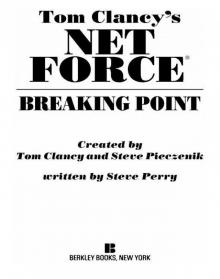 Breaking Point
Breaking Point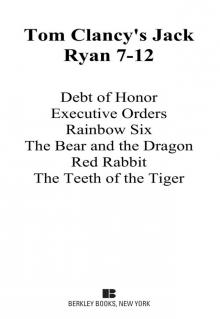 Tom Clancy's Jack Ryan Books 7-12
Tom Clancy's Jack Ryan Books 7-12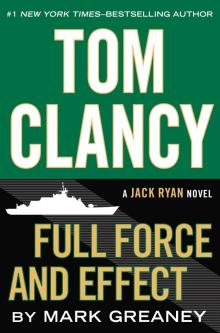 Full Force and Effect
Full Force and Effect The Archimedes Effect
The Archimedes Effect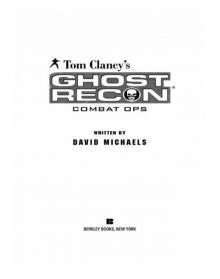 Combat Ops
Combat Ops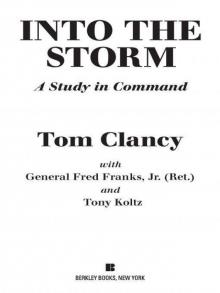 Into the Storm: On the Ground in Iraq
Into the Storm: On the Ground in Iraq Under Fire
Under Fire Point of Impact
Point of Impact Red Rabbit
Red Rabbit Rainbow Six
Rainbow Six The Hunt for Red October
The Hunt for Red October The Teeth of the Tiger
The Teeth of the Tiger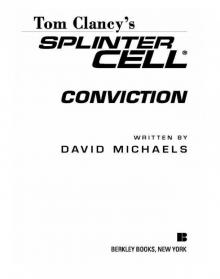 Conviction (2009)
Conviction (2009)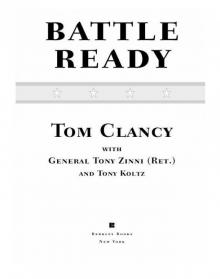 Battle Ready
Battle Ready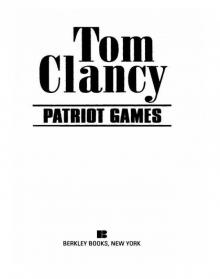 Patriot Games
Patriot Games The Sum of All Fears
The Sum of All Fears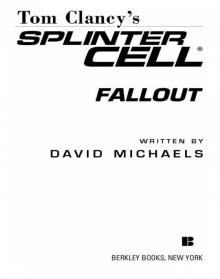 Fallout (2007)
Fallout (2007) Red Storm Rising
Red Storm Rising The Cardinal of the Kremlin
The Cardinal of the Kremlin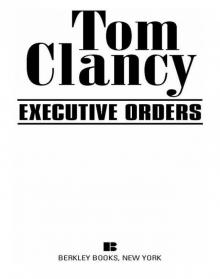 Executive Orders
Executive Orders Lincoln, the unknown
Lincoln, the unknown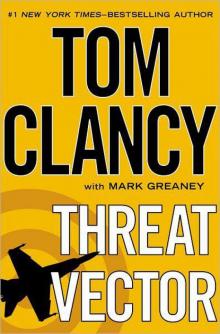 Threat Vector
Threat Vector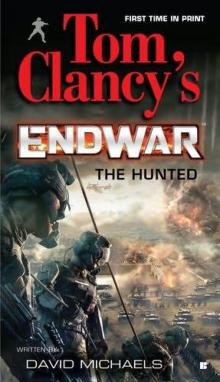 The Hunted
The Hunted Shadow Warriors: Inside the Special Forces
Shadow Warriors: Inside the Special Forces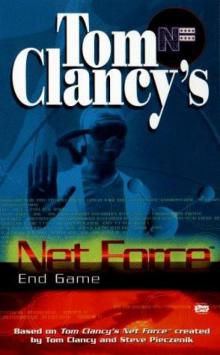 End Game
End Game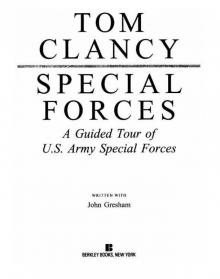 Special Forces: A Guided Tour of U.S. Army Special Forces
Special Forces: A Guided Tour of U.S. Army Special Forces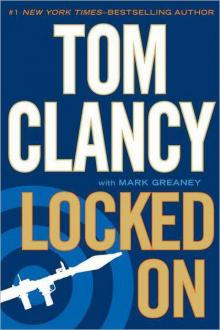 Locked On
Locked On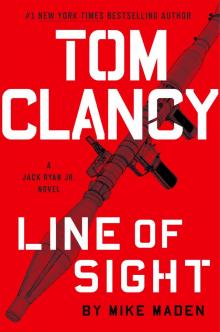 Line of Sight
Line of Sight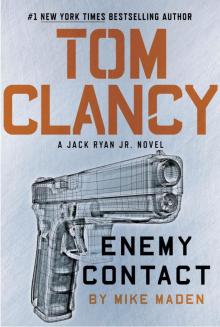 Tom Clancy Enemy Contact - Mike Maden
Tom Clancy Enemy Contact - Mike Maden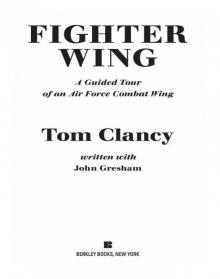 Fighter Wing: A Guided Tour of an Air Force Combat Wing
Fighter Wing: A Guided Tour of an Air Force Combat Wing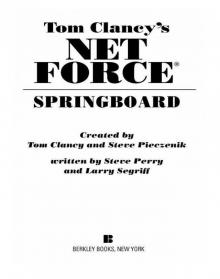 Springboard
Springboard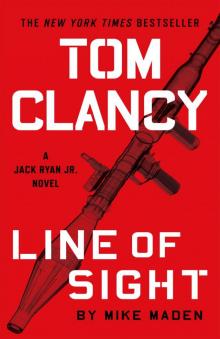 Line of Sight - Mike Maden
Line of Sight - Mike Maden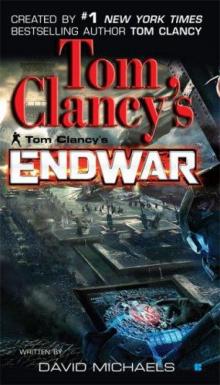 EndWar
EndWar Dead or Alive
Dead or Alive Tom Clancy Support and Defend
Tom Clancy Support and Defend Checkmate
Checkmate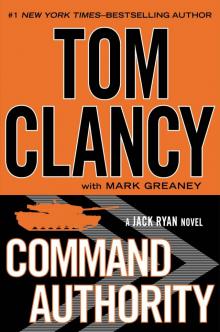 Command Authority
Command Authority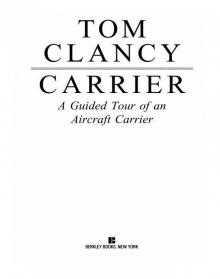 Carrier: A Guided Tour of an Aircraft Carrier
Carrier: A Guided Tour of an Aircraft Carrier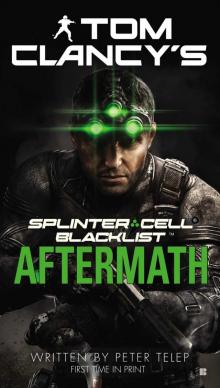 Blacklist Aftermath
Blacklist Aftermath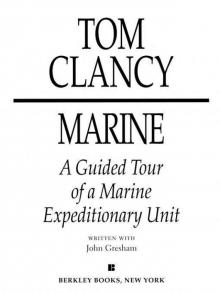 Marine: A Guided Tour of a Marine Expeditionary Unit
Marine: A Guided Tour of a Marine Expeditionary Unit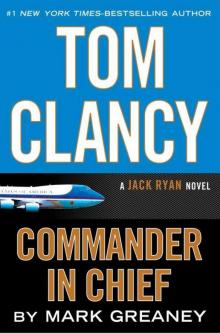 Commander-In-Chief
Commander-In-Chief Armored Cav: A Guided Tour of an Armored Cavalry Regiment
Armored Cav: A Guided Tour of an Armored Cavalry Regiment Tom Clancy's Jack Ryan Books 1-6
Tom Clancy's Jack Ryan Books 1-6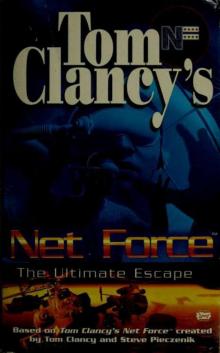 The Ultimate Escape
The Ultimate Escape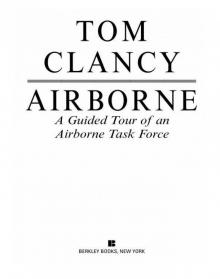 Airborne: A Guided Tour of an Airborne Task Force
Airborne: A Guided Tour of an Airborne Task Force Debt of Honor
Debt of Honor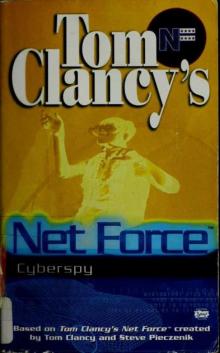 Cyberspy
Cyberspy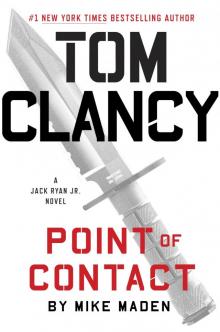 Point of Contact
Point of Contact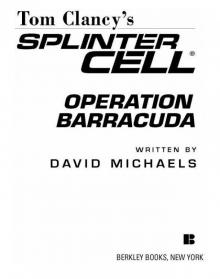 Operation Barracuda (2005)
Operation Barracuda (2005)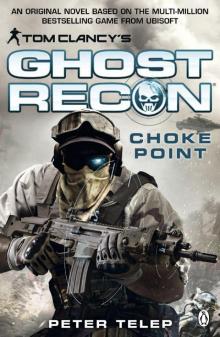 Choke Point
Choke Point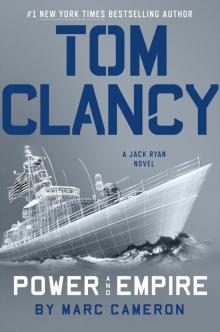 Power and Empire
Power and Empire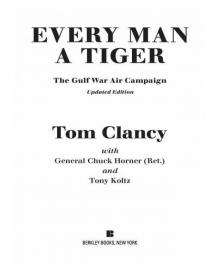 Every Man a Tiger: The Gulf War Air Campaign
Every Man a Tiger: The Gulf War Air Campaign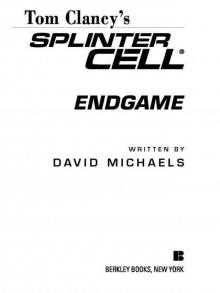 Endgame (1998)
Endgame (1998)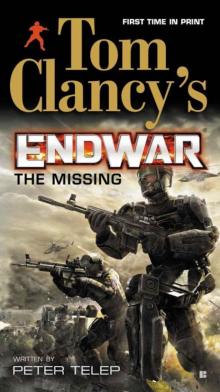 EndWar: The Missing
EndWar: The Missing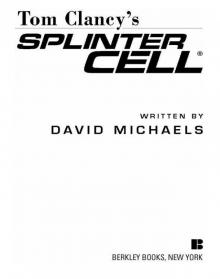 Splinter Cell (2004)
Splinter Cell (2004)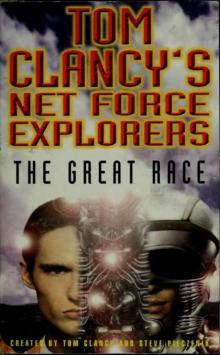 The Great Race
The Great Race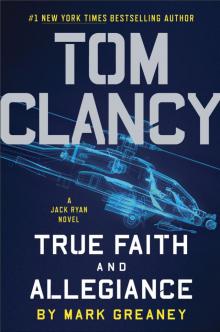 True Faith and Allegiance
True Faith and Allegiance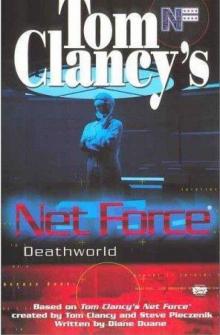 Deathworld
Deathworld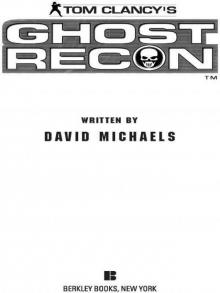 Ghost Recon (2008)
Ghost Recon (2008)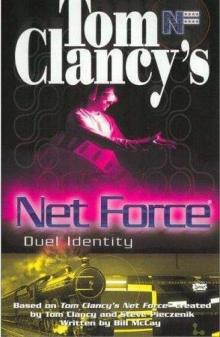 Duel Identity
Duel Identity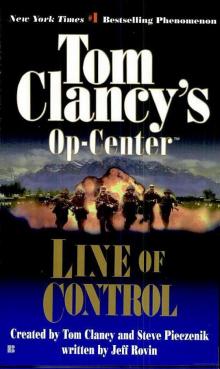 Line of Control o-8
Line of Control o-8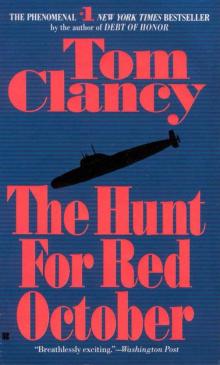 The Hunt for Red October jr-3
The Hunt for Red October jr-3 Hidden Agendas nf-2
Hidden Agendas nf-2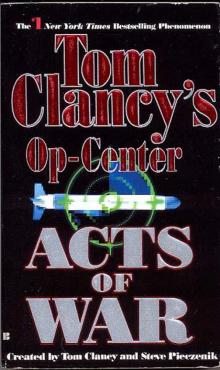 Acts of War oc-4
Acts of War oc-4 Ruthless.Com pp-2
Ruthless.Com pp-2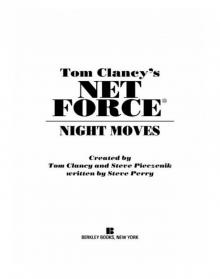 Night Moves
Night Moves The Hounds of Rome - Mystery of a Fugitive Priest
The Hounds of Rome - Mystery of a Fugitive Priest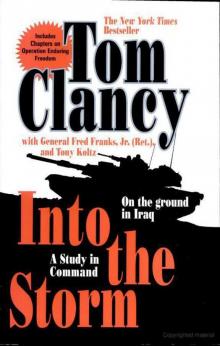 Into the Storm: On the Ground in Iraq sic-1
Into the Storm: On the Ground in Iraq sic-1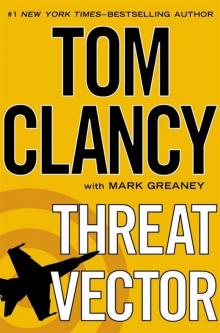 Threat Vector jrj-4
Threat Vector jrj-4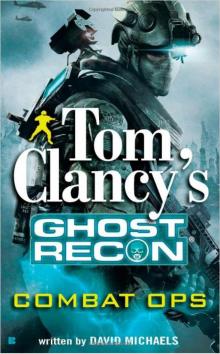 Combat Ops gr-2
Combat Ops gr-2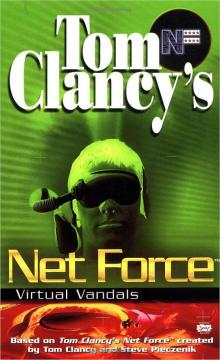 Virtual Vandals nfe-1
Virtual Vandals nfe-1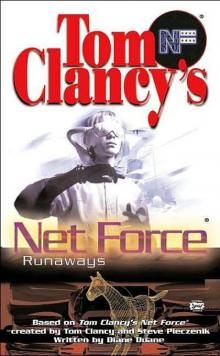 Runaways nfe-16
Runaways nfe-16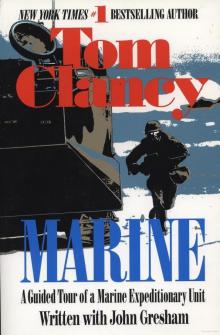 Marine: A Guided Tour of a Marine Expeditionary Unit tcml-4
Marine: A Guided Tour of a Marine Expeditionary Unit tcml-4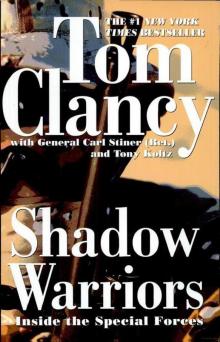 Shadow Warriors: Inside the Special Forces sic-3
Shadow Warriors: Inside the Special Forces sic-3 Jack Ryan Books 1-6
Jack Ryan Books 1-6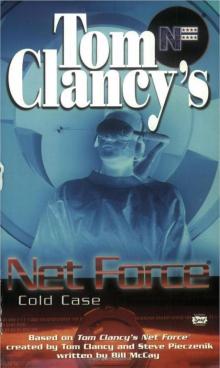 Cold Case nfe-15
Cold Case nfe-15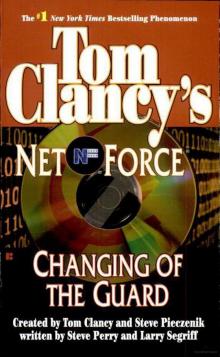 Changing of the Guard nf-8
Changing of the Guard nf-8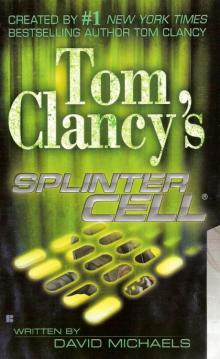 Splinter Cell sc-1
Splinter Cell sc-1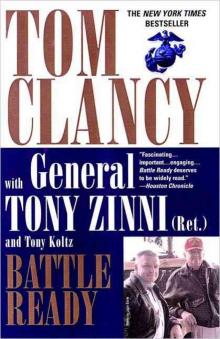 Battle Ready sic-4
Battle Ready sic-4 The Bear and the Dragon jrao-11
The Bear and the Dragon jrao-11 Fighter Wing: A Guided Tour of an Air Force Combat Wing tcml-3
Fighter Wing: A Guided Tour of an Air Force Combat Wing tcml-3 Patriot Games jr-1
Patriot Games jr-1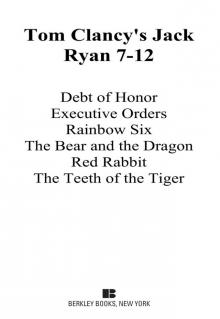 Jack Ryan Books 7-12
Jack Ryan Books 7-12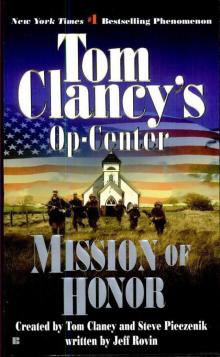 Mission of Honor o-9
Mission of Honor o-9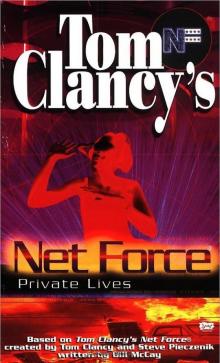 Private Lives nfe-9
Private Lives nfe-9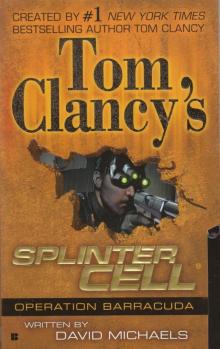 Operation Barracuda sc-2
Operation Barracuda sc-2 Cold War pp-5
Cold War pp-5 Point of Impact nf-5
Point of Impact nf-5 Red Rabbit jr-9
Red Rabbit jr-9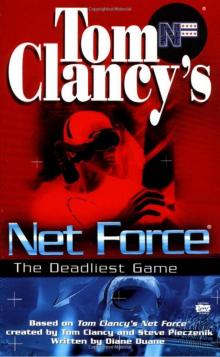 The Deadliest Game nfe-2
The Deadliest Game nfe-2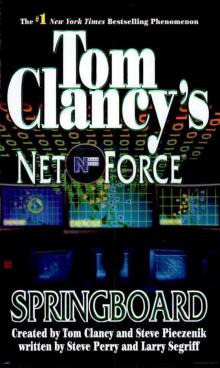 Springboard nf-9
Springboard nf-9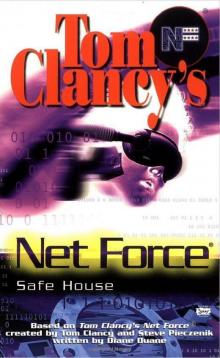 Safe House nfe-10
Safe House nfe-10 EndWar e-1
EndWar e-1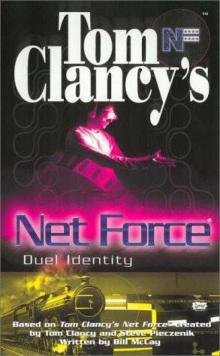 Duel Identity nfe-12
Duel Identity nfe-12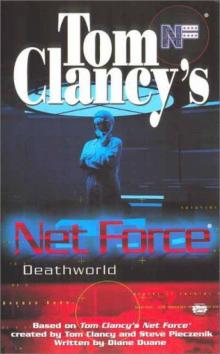 Deathworld nfe-13
Deathworld nfe-13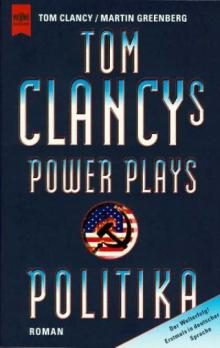 Politika pp-1
Politika pp-1 Rainbow Six jr-9
Rainbow Six jr-9 Tom Clancy's Power Plays 1 - 4
Tom Clancy's Power Plays 1 - 4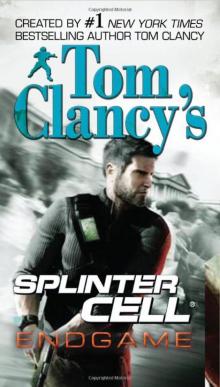 Endgame sc-6
Endgame sc-6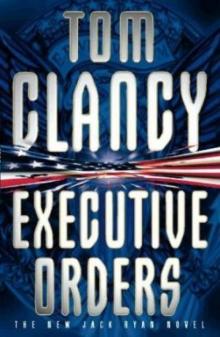 Executive Orders jr-7
Executive Orders jr-7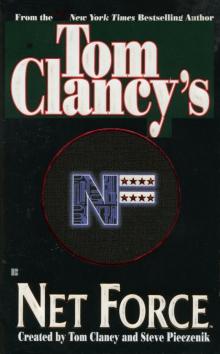 Net Force nf-1
Net Force nf-1 Call to Treason o-11
Call to Treason o-11 Locked On jrj-3
Locked On jrj-3 Against All Enemies
Against All Enemies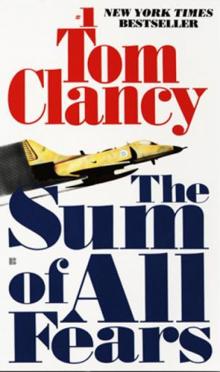 The Sum of All Fears jr-7
The Sum of All Fears jr-7 Sea of Fire o-10
Sea of Fire o-10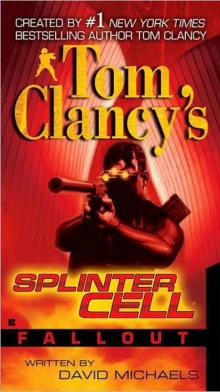 Fallout sc-4
Fallout sc-4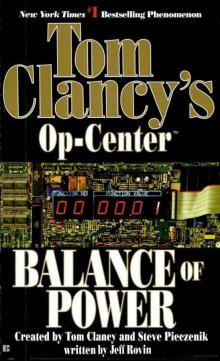 Balance of Power o-5
Balance of Power o-5 Shadow Watch pp-3
Shadow Watch pp-3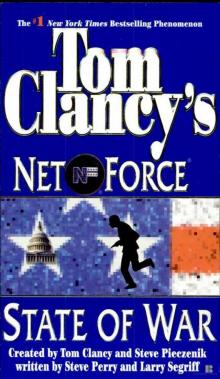 State of War nf-7
State of War nf-7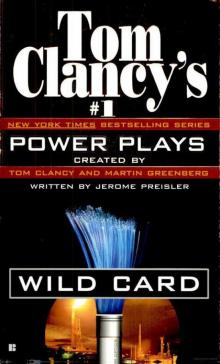 Wild Card pp-8
Wild Card pp-8 Games of State o-3
Games of State o-3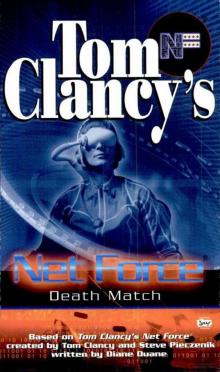 Death Match nfe-18
Death Match nfe-18 Against All Enemies mm-1
Against All Enemies mm-1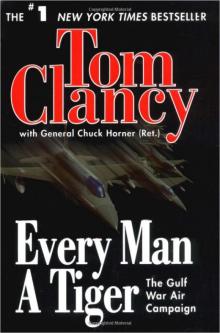 Every Man a Tiger: The Gulf War Air Campaign sic-2
Every Man a Tiger: The Gulf War Air Campaign sic-2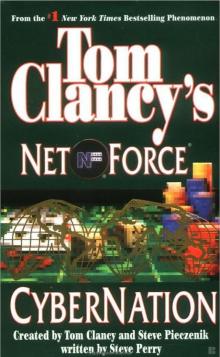 Cybernation nf-6
Cybernation nf-6 Support and Defend
Support and Defend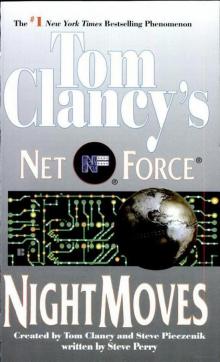 Night Moves nf-3
Night Moves nf-3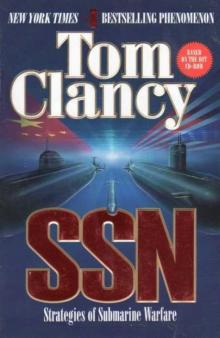 SSN
SSN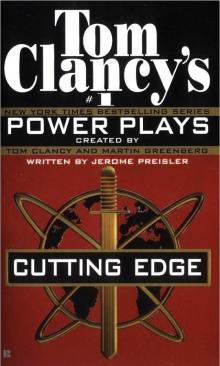 Cutting Edge pp-6
Cutting Edge pp-6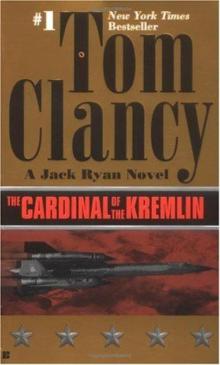 The Cardinal of the Kremlin jrao-5
The Cardinal of the Kremlin jrao-5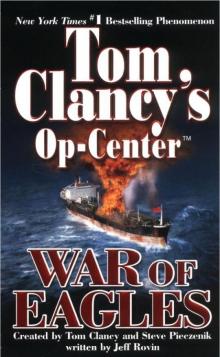 War of Eagles o-12
War of Eagles o-12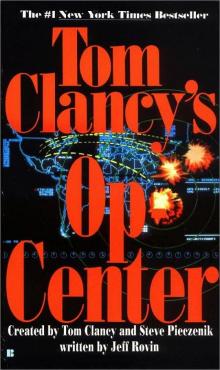 Op-Center o-1
Op-Center o-1 Mirror Image o-2
Mirror Image o-2 The Archimedes Effect nf-10
The Archimedes Effect nf-10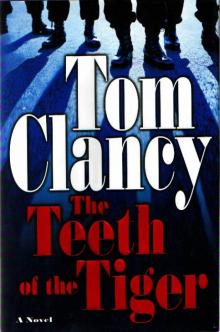 Teeth of the Tiger jrj-1
Teeth of the Tiger jrj-1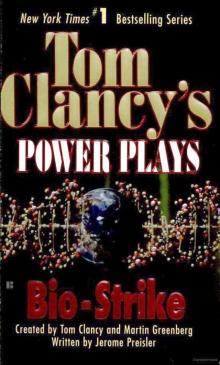 Bio-Strike pp-4
Bio-Strike pp-4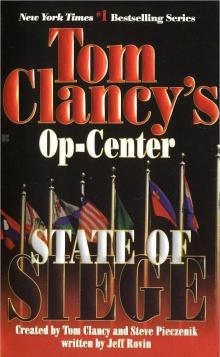 State of Siege o-6
State of Siege o-6 Debt of Honor jr-6
Debt of Honor jr-6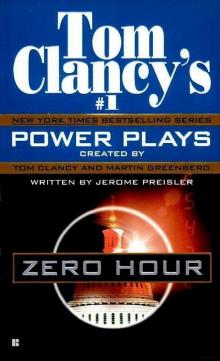 Zero Hour pp-7
Zero Hour pp-7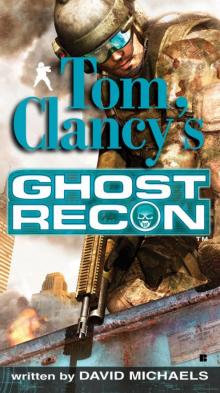 Ghost Recon gr-1
Ghost Recon gr-1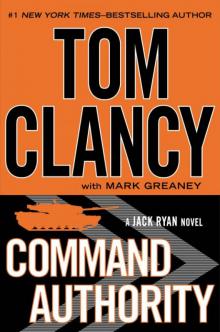 Command Authority jr-10
Command Authority jr-10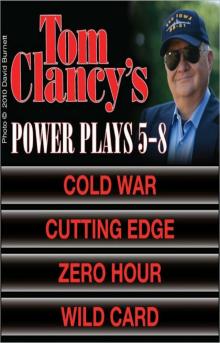 Tom Clancy's Power Plays 5 - 8
Tom Clancy's Power Plays 5 - 8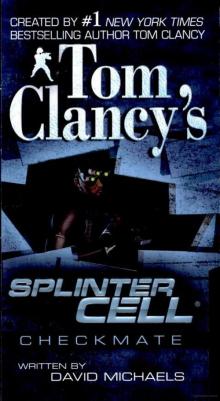 Checkmate sc-3
Checkmate sc-3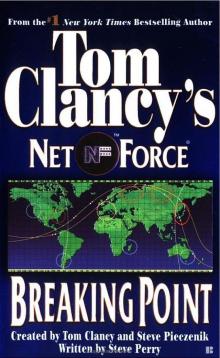 Breaking Point nf-4
Breaking Point nf-4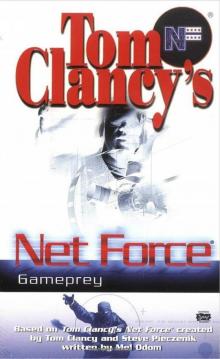 Gameprey nfe-11
Gameprey nfe-11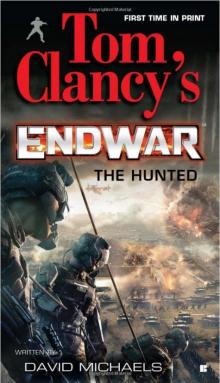 The Hunted e-2
The Hunted e-2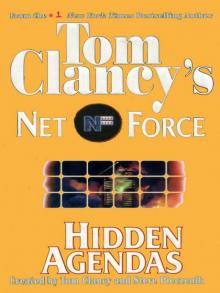 Hidden Agendas
Hidden Agendas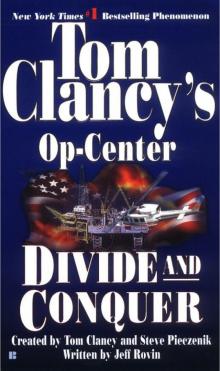 Divide and Conquer o-7
Divide and Conquer o-7